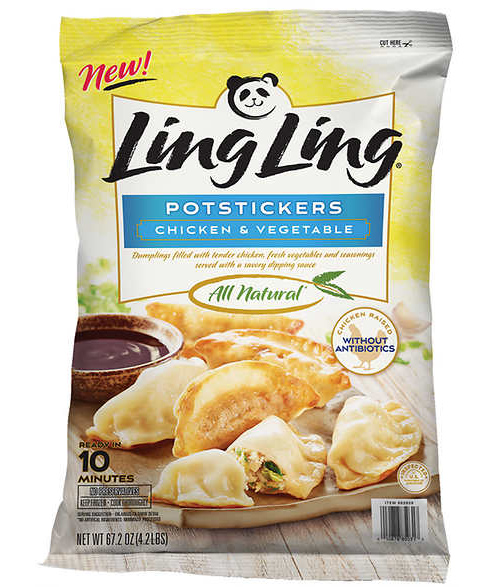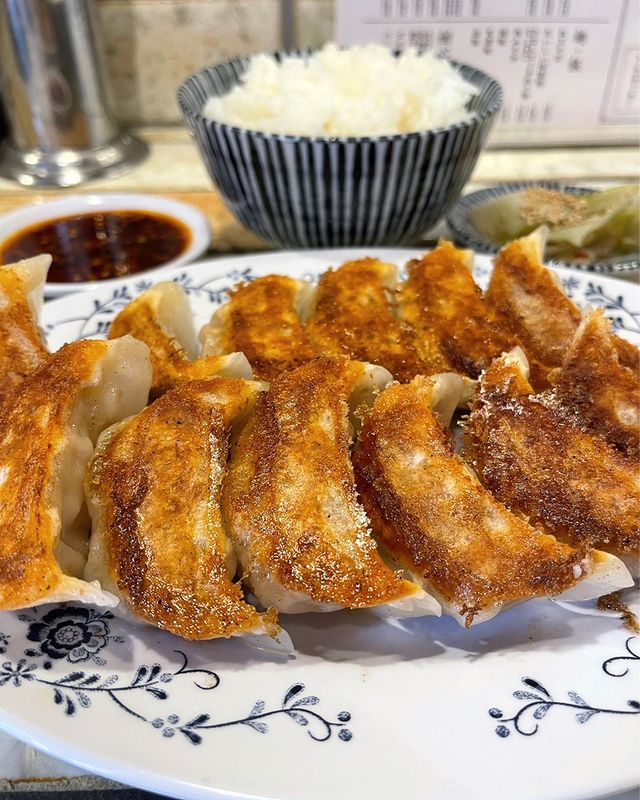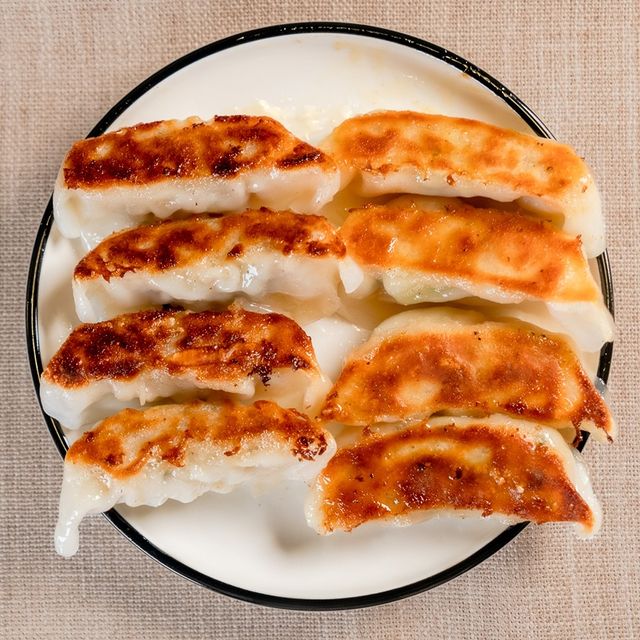Are potstickers gluten free? This question often arises for individuals with gluten sensitivity or celiac disease. Potstickers, a popular Asian dish, typically consist of a savory filling wrapped in a thin dough and pan-fried to perfection. However, the presence of gluten in the dough raises concerns for those on a gluten-free diet.
While traditional potstickers contain gluten, there are now gluten-free alternatives available in the market. In this article, we will explore the topic of potstickers and delve into whether they can be enjoyed by individuals following a gluten-free lifestyle. So, let’s find out: are potstickers gluten-free?
Maybe you concern: Different Types of Chinese Dumplings
What are potstickers?

Potstickers are a beloved and mouthwatering dish that has gained immense popularity in recent years. These delectable dumplings have their roots in Chinese cuisine but have since spread across the globe, captivating the taste buds of food enthusiasts everywhere.
At their core, potstickers are small parcels of deliciousness. They consist of a flavorful filling, often made with a combination of meats, vegetables, and aromatic spices, encased in a delicate dough wrapper. The name “potstickers” is derived from the cooking method used, where the dumplings are initially pan-fried to create a crispy bottom and then steamed to ensure the filling is cooked through.
The appeal of potstickers lies not only in their tantalizing taste but also in their versatility. They can be customized with various fillings, ranging from classic combinations like pork and cabbage to more creative options like shrimp and mushrooms or vegetarian alternatives. This adaptability has contributed to their widespread popularity among different culinary preferences.
However, as the demand for gluten-free options continues to rise, it is essential to address whether potstickers can accommodate individuals with gluten sensitivities or celiac disease. Traditionally, the dough used in potstickers contains gluten, which is a protein found in wheat, barley, and rye. This poses a challenge for those who must adhere to a gluten-free diet.
Fortunately, with the growing awareness and demand for gluten-free alternatives, many brands and restaurants now offer gluten-free potstickers. These versions typically use alternative flours, such as rice flour or tapioca starch, to create a dough that mimics the texture and taste of traditional potstickers while remaining gluten-free.
Read also: Are Dumplings Healthy Or Not?
Potstickers ingredients

The ingredients commonly used in potstickers include:
- Ground meat: Usually pork, but it can also be chicken, beef, or a combination.
- Vegetables: Common choices include cabbage, scallions (green onions), carrots, mushrooms, and garlic.
- Aromatics and seasonings: These can include ginger, soy sauce, sesame oil, oyster sauce, salt, and pepper.
- Wrappers: Thin dough made from wheat flour or alternative gluten-free flours for gluten-free versions.
- Oil: Typically vegetable or sesame oil for frying the potstickers.
- Dipping sauce: Often a combination of soy sauce, rice vinegar, sesame oil, and chili oil, with additional ingredients like garlic or ginger for added flavor.
Are potstickers gluten-free?

Potstickers, also known as gyoza, traditionally utilize wheat flour in their wrappers, making them unsuitable for those following a gluten-free diet. However, with the increasing demand for gluten-free options, there are now gyoza available in the market that cater to individuals with gluten sensitivities or celiac disease.
These gluten-free alternatives often incorporate alternative flours like rice flour or tapioca starch to create wrappers that are free from gluten.
These gluten-free gyoza provide a wonderful opportunity for individuals on a gluten-free diet to savor the delicious flavors and textures of this beloved dish. When purchasing or ordering gyoza, it is essential to carefully check the packaging or inquire with the restaurant to ensure that they are specifically labeled as gluten-free.
By doing so, you can enjoy gluten-free gyoza without compromising your dietary requirements or experiencing any adverse reactions associated with gluten consumption.
Gluten and its impact on health
Gluten is a protein found in grains like wheat, barley, and rye. While it poses no health risks for most people, individuals with gluten intolerance or certain autoimmune conditions need to be mindful of its impact on their health.
Gluten intolerance refers to a spectrum of conditions in which the consumption of gluten can cause adverse reactions. Celiac disease is one such condition—an autoimmune disorder where the ingestion of gluten triggers an immune response, damaging the lining of the small intestine. This damage can lead to various digestive symptoms, malabsorption of nutrients, and long-term health complications if left untreated.
For individuals with celiac disease, adhering to a strict gluten-free diet is crucial. Even trace amounts of gluten can cause significant harm. Gluten sensitivity, also known as non-celiac gluten sensitivity, is another condition where individuals experience similar symptoms to celiac disease but do not have the same immune response or intestinal damage.
Both celiac disease and gluten sensitivity can manifest with symptoms like:
- Bloating
- Abdominal pain
- Diarrhea
- Fatigue
- Skin rashes
Eliminating gluten from the diet is often the recommended approach to manage these conditions and alleviate symptoms.
It’s worth noting that gluten intolerance is different from wheat allergy, where the immune system reacts to specific proteins in wheat rather than gluten itself. Wheat allergy can cause severe allergic reactions and requires strict avoidance of all wheat products.
How to identify gluten in potstickers?
Identifying gluten in potstickers requires careful examination of the ingredients used in their preparation. Here are some key points to consider when determining the presence of gluten in potstickers:
- Wrapper Ingredients: The primary concern lies in the wrapper, as it typically contains wheat flour. Check the label or inquire about the ingredients used to make the dough. If wheat flour is listed, it indicates the presence of gluten.
- Cross-Contamination: Even if the wrapper ingredients are gluten-free, cross-contamination during preparation is possible. If the potstickers are made in a facility that also handles wheat products, there may be a risk of gluten cross-contamination. Look for gluten-free certifications or inquire about the facility’s practices to ensure gluten-free safety measures are in place.
- Fillings and Seasonings: While the filling ingredients are usually gluten-free, some seasonings or sauces may contain gluten. Soy sauce, for instance, typically contains wheat. It’s important to inquire about the specific seasonings used and check if they are gluten-free.
- Potential Hidden Gluten: Pay attention to additives or fillers that might contain gluten. This could include modified food starch, maltodextrin, or certain flavorings. Gluten can also hide in ingredients such as hydrolyzed wheat protein, which is often found in processed foods.
What potstickers are gluten free?
Several gluten-free brands offer potstickers that cater to individuals following a gluten-free diet. Here are some popular gluten-free potsticker brands available in the market:
Feel Good Foods
Feel Good Foods offers a variety of gluten-free frozen potstickers made with rice flour wrappers. They have options like chicken, pork, and vegetable potstickers that are widely available in many grocery stores.

Whole Foods Market
Whole Foods Market offers its own gluten-free potstickers under their store brand. They have options like vegetable, chicken, and pork potstickers, catering to gluten-free consumers.

Nasoya
Nasoya, known for its tofu products, also offers gluten-free potstickers. Their potstickers are made with gluten-free wrappers and come in flavors like chicken and vegetable.

Annie Chun’s
Annie Chun’s is a well-known brand that offers gluten-free potstickers made with rice flour wrappers. They have options like chicken and vegetable potstickers, which are widely available in many grocery stores.

FAQs
Are potstickers always made with wheat wrappers?
Potstickers are traditionally made with wheat wrappers, which contain gluten. However, there are now gluten-free potstickers available in the market. These gluten-free versions use alternative flours, such as rice flour or tapioca starch, to create wrappers that are suitable for individuals with gluten sensitivities or celiac disease.
It’s important to check the product labels or inquire about the ingredients to determine if the potstickers are made with wheat or gluten-free wrappers.
Can gluten-free potstickers be as delicious as traditional ones?
Yes, gluten-free potstickers can be just as delicious as traditional ones. With advancements in gluten-free cooking and the availability of a wide range of alternative flours and ingredients, it is possible to create gluten-free potstickers that offer the same flavorful fillings and enjoyable texture.
Many brands and restaurants have put great effort into developing gluten-free options that are equally satisfying in taste and appearance. By using quality ingredients and appropriate cooking techniques, gluten-free potstickers can deliver a delightful dining experience for individuals with gluten sensitivities or dietary restrictions.
Can I freeze gluten-free potstickers for later consumption?
Yes, you can freeze gluten-free potstickers for later consumption. Freezing is a convenient way to store them for an extended period. Ensure that the potstickers are fully cooled before freezing.
To prevent sticking, you can arrange them in a single layer on a baking sheet and freeze them until solid, then transfer them to airtight containers or freezer bags.
When ready to enjoy, you can cook the frozen potstickers by steaming, boiling, or pan-frying them as per the cooking instructions. Freezing gluten-free potstickers helps to maintain their freshness and allows you to enjoy them at your convenience.
Can I make gluten-free potstickers at home?
Yes, you can make gluten-free potstickers at home. There are various gluten-free recipes available that use alternative flours like rice flour, tapioca starch, or a combination of gluten-free flours to create the dough for the wrappers. These recipes often mimic the texture and taste of traditional potstickers while being gluten-free.
Are gluten-free potstickers as crispy as regular potstickers?
Regarding the crispiness of gluten-free potstickers, it can depend on the specific recipe and cooking technique used. Achieving a crispy texture can be slightly more challenging with gluten-free dough due to the absence of gluten, which provides elasticity and structure.
However, with the right combination of ingredients and cooking methods such as pan-frying, it is possible to achieve a satisfying crispness with gluten-free potstickers. Experimenting with different recipes and techniques can help you find the perfect balance for achieving crispy gluten-free potstickers.
Are gluten-free potstickers widely available in grocery stores?
The availability of gluten-free potstickers in grocery stores can vary depending on your location and the stores in your area. In recent years, there has been an increase in the availability of gluten-free options, including potstickers, in many grocery stores.
However, checking with your local grocery stores or specialty markets is recommended to see if they carry gluten-free potstickers.
How long do gluten-free potstickers typically last in the freezer?
Gluten-free potstickers typically last in the freezer for a few months, similar to regular potstickers. However, it is always best to refer to the specific instructions on the packaging or the recipe you are using for more accurate information.
Proper packaging and storage techniques, such as placing them in airtight containers or freezer bags, can help maintain the quality of gluten-free potstickers for an extended period.
Are gluten-free potstickers safe for children with gluten intolerance?
Gluten-free potstickers can be a safe option for children with gluten intolerance. However, it is crucial to ensure that the potstickers are truly gluten-free by checking the labels and verifying the manufacturing processes to prevent cross-contamination. It is always recommended to consult with a healthcare professional or a registered dietitian for personalized advice regarding your child’s dietary needs.
How do I reheat frozen gluten-free potstickers?
To reheat frozen gluten-free potstickers, there are a few methods you can use. One common approach is to steam them by placing the frozen potstickers in a steamer basket over boiling water for about 5-7 minutes or until heated through.
Another method is to pan-fry them by heating oil in a non-stick pan and cooking the frozen potstickers until they are crispy and heated all the way through. Follow the specific cooking instructions provided by the manufacturer or the recipe you are using for best results.
Read more: How Long To Boil Dumplings?
Can I find gluten-free potstickers in vegetarian or vegan options?
Yes, you can find gluten-free potstickers in vegetarian or vegan options. Many brands offer gluten-free potstickers with fillings that are made entirely from plant-based ingredients.
These vegetarian or vegan potstickers often feature combinations of vegetables, tofu, mushrooms, or other plant-based proteins as the filling. Always check the packaging or inquire about the ingredients to ensure that the potstickers are both gluten-free and suitable for your dietary preferences.
Conclusion
Finally, the availability of gluten-free potstickers has expanded, allowing individuals with gluten sensitivities or celiac disease to enjoy this beloved dish. While traditional potstickers are made with wheat wrappers containing gluten, gluten-free potstickers offer a viable alternative.
With the use of alternative flours such as rice flour or tapioca starch, gluten-free potstickers can be as delicious and satisfying as their traditional counterparts. Whether purchased from specialty stores, ordered at restaurants, or made at home, gluten-free potstickers provide a flavorful option for those following a gluten-free lifestyle.
With increasing awareness and demand, it is becoming easier to find gluten-free potstickers that cater to various dietary needs. So, if you’ve been wondering, “Are potstickers gluten free available?” the answer is yes, and they offer a delightful dining experience for gluten-free individuals seeking to savor the flavors of this popular dish.
Keep reading: